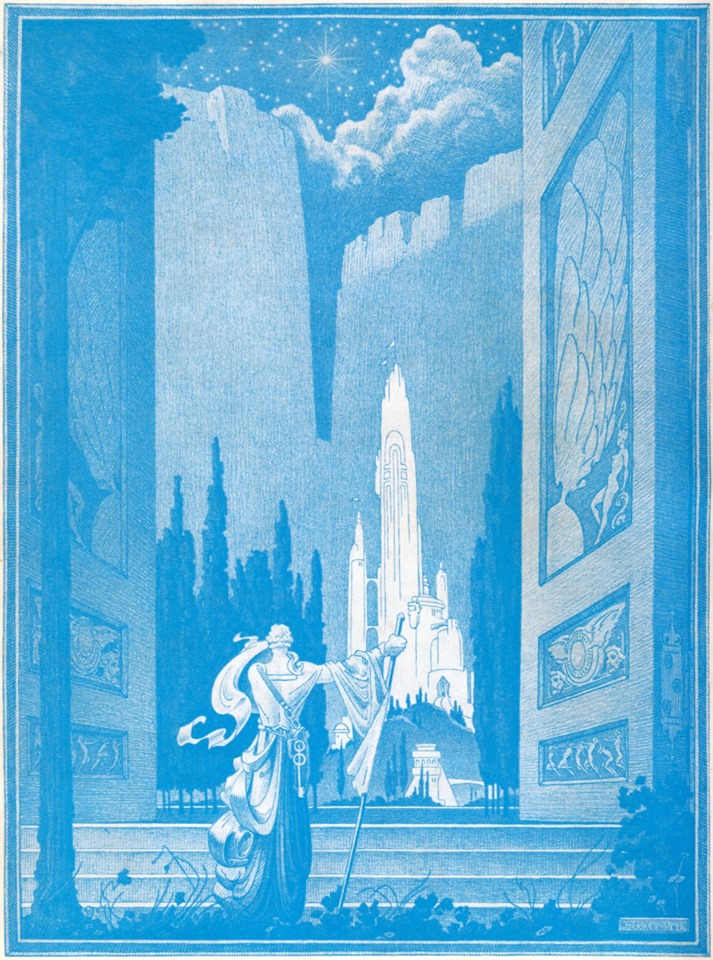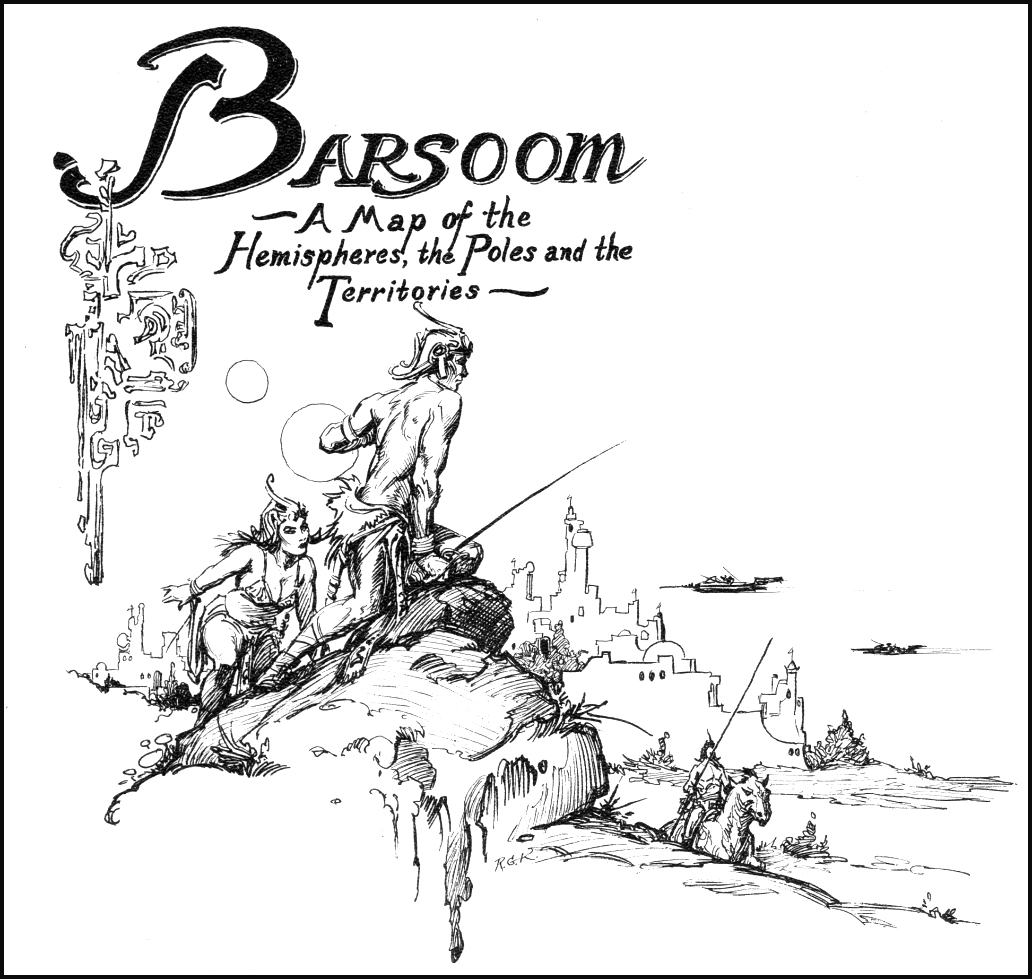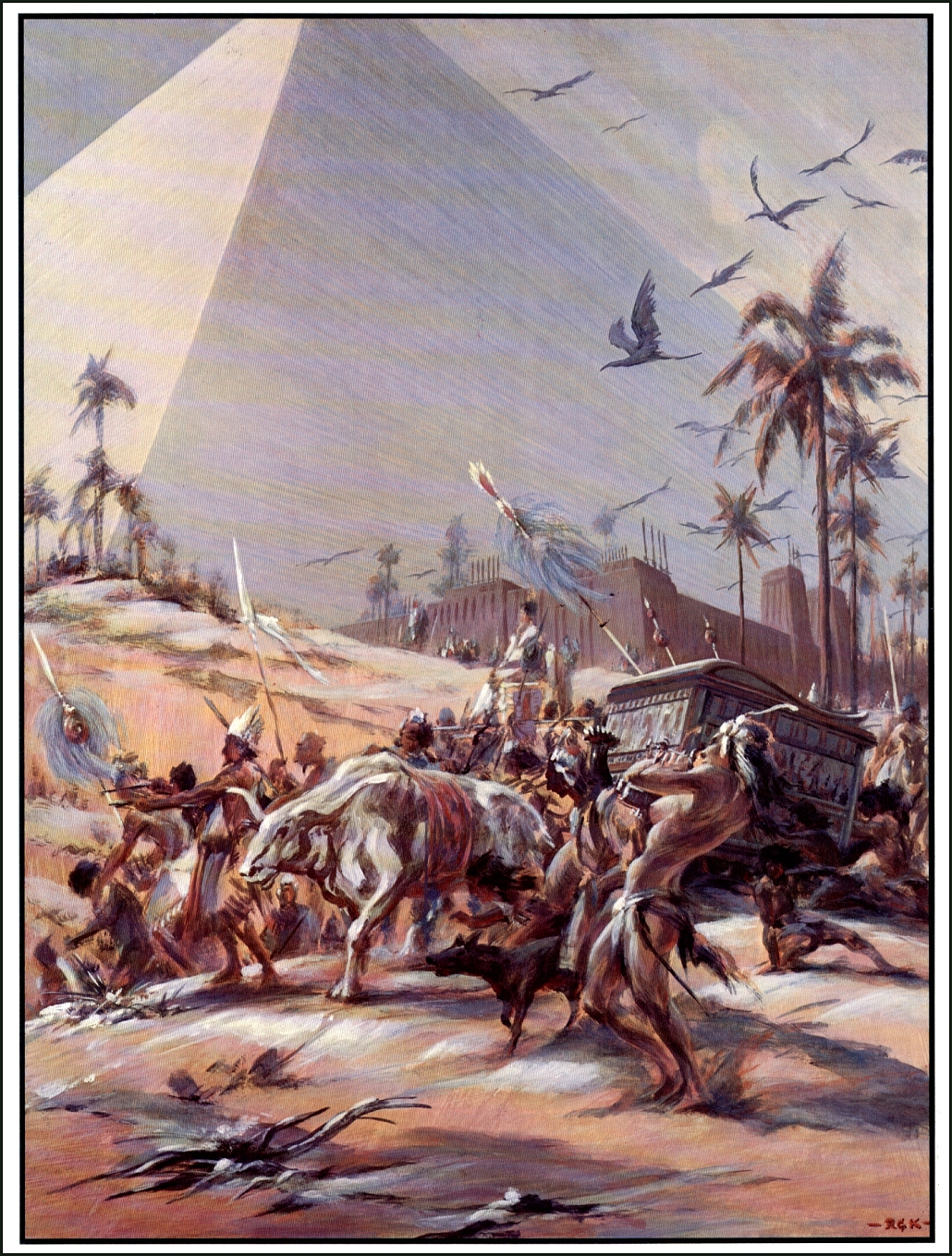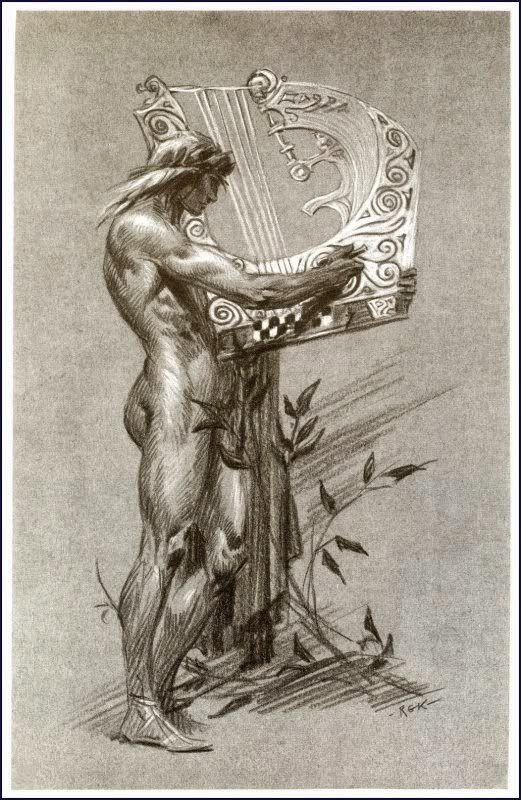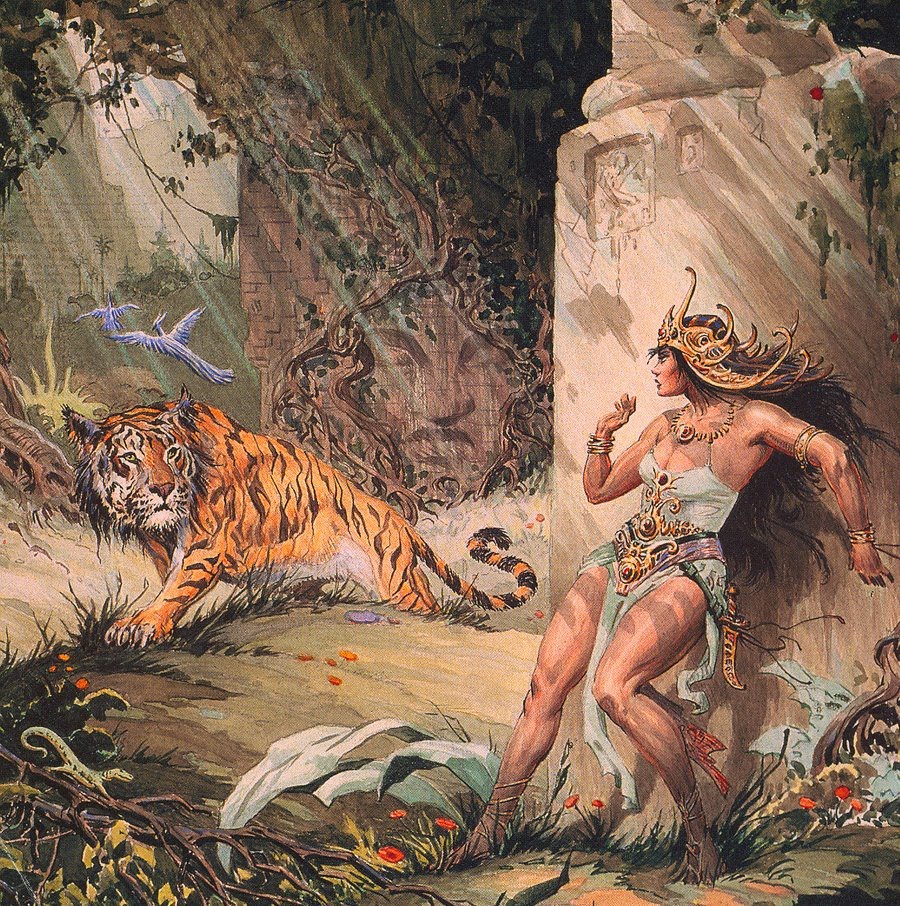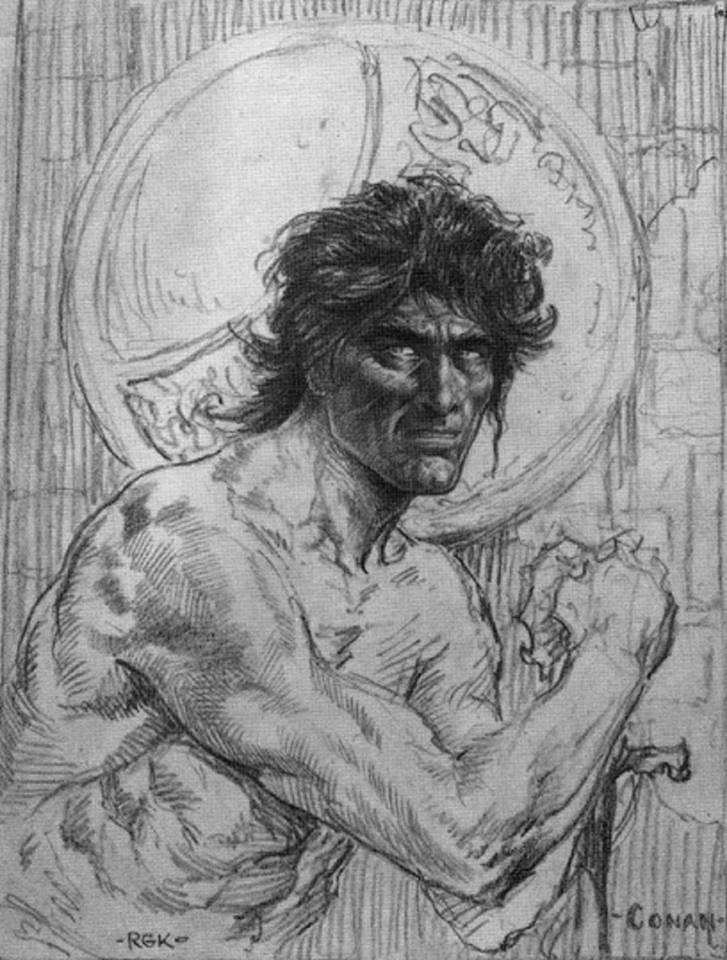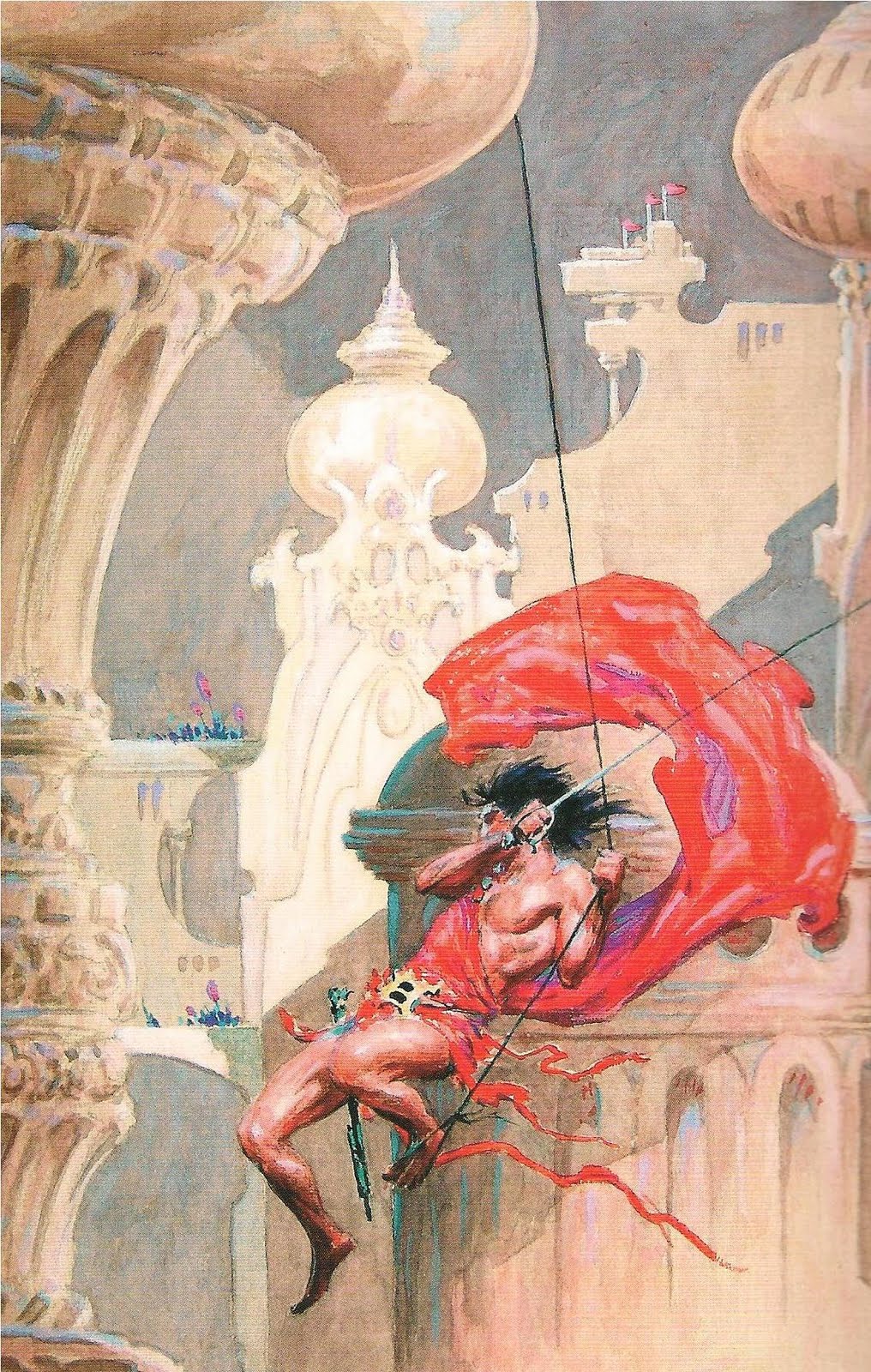Roy G. Krenkel: A Neglected Master
"I met Roy Krenkel back in 1949 or 1950, and he has never ceased to be a constant source of inspiration to me—a truly conscientious artist who will not tolerate incompetence." — Frank Frazetta
Roy G. Krenkel would’ve turned one hundred and one today. I have to say that his centennial year was underwhelming. Despite his importance to SFF art during a crucial period in the twentieth century, his one hundredth birthday year went largely ignored across the blogosphere. I wrote two posts looking at the man and his work, but never quite got around to finishing all that up with a summation of his influence and legacy.
Perhaps this widespread neglect is fitting in one sense, or, at least, is not unexpected. Roy was the opposite of a relentless self-promoter. It appears that he never held that high of an opinion of his own work, referring to himself as more of a “doodler” than a “real artist.” Even winning a Hugo the very first year he was eligible—Frank Frazetta wasn’t even nominated—didn’t boost RGK’s self-esteem. Little more than a decade after he won that Hugo, Roy had almost dropped out of doing art for publishing houses. He would go to conventions and sell boxes of sketches—having a good time, apparently—but he didn’t take on contracts for new book covers. Roy was a quiet man who seems not to have wanted the attention from history that he deserved. He went on the record as scorning the “tawdry pomp of public acclaim.”
Roy certainly deserves more attention than he’s gotten in the twenty-first century. After serving his country in World War Two, RGK returned to the States and attended Burne Hogarth’s School of Visual Arts. It was there that he became a mentor to Frank Frazetta and Al Williamson. He helped launch the Burroughs Boom in the early ‘60s by doing covers for the new Ace and Canaveral ERB editions. Danton Burroughs, the grandson of Edgar Rice Burroughs, once commented, “Roy Krenkel was a key factor in the 1960s revival of my grandfather's writings. Krenkel's illustrations forever secured his position as one of the all-time great Edgar Rice Burroughs illustrators.”
Krenkel moved on to Lancer Books, where he would paint his classic cover for King Kull. It was also during this period that he took a young Michael Wm. Kaluta under his wing. I’ve heard rumors that he gave tips and help to Jeffrey Jones and Bernie Wrightson around that time as well.
Moving into the 1970s, Roy was doing work for Warren Magazines and DAW Books. However, his greatest swan songs—as they turned out to be—would consist of The Sowers of the Thunder and The Road of Azrael, published by Donald M. Grant. Both were collections of Robert E. Howard’s historical adventures. RGK provided not only the art for The Sowers of the Thunder, but the intro as well. Read it below in its entirety, because it’s made of pure awesome.
RGK’s illo of Red Sonya of Rogatino for The Sowers of the Thunder.
Howard was a great writer -- it has been said before -- a score of times. It bears repeating.
Listen:
When I was a fighting man, the kettle drums they beat;
The people scattered gold dust before my horse's feet;
Now I am a great king, the people hound my track
With poison in my wine-cup and daggers at my back.
It's all there -- all the tawdry pomp of public acclaim, the empty prize of kingship, the burden of duty, the subtle treachery -- fear; in little more than a couplet! I have read lengthy novels that told it less well.
His words rang like brazen hammers on some anvil of the gods. Dark gods -- and wayward.
It is the custom for artists who undertake the writing of introductory essays to acknowledge the 'privilege' attendant to illustrating the volume in question. rather, in this case at least, say it was -- a mandate! Some tales demand placement between decent bindings, along with such adornment as skill permits. (If the implications of this seem too sententious for the mid-twentieth century ego, so much the worse for that ego -- but remember, I grew up on Tros of Samothrace!)
I am not an illustrator in the proper or classic sense of that oft-times ambiguous word, nor never shall be. The attempt here was not so much to 'illustrate' the words of the text (Howard needs no interpreter), but rather to embellish that text -- to space it out as it were -- with a kind of pictorial mood in echo of the copy.
One reads Howard distantly, as though through a mist of time -- fleeting glimpses, lightning sharp, are caught of marching men in grim armor, of battlements stormed by savage hordes, of whispered intrigues in tapestried candlelight. As from afar we hear the summons of the oliphant, the ring of steel on steel, the screams of the dying; too vast -- too terrible -- to grasp as reality, and, somehow, the more 'real' for all that! What emerges, sharp and clear, is the mood.
Which brings me to an aspect of Howard -- and of his work -- that has, so far as I can recall, been curiously overlooked: his 'feel' for tragedy, and for -- what shall I call it -- evanescence?
For my road runs out in thistles and my dreams
have turned to dust,
And my pinions fade and falter to the raven-wings of rust.
He was aware of this quality of 'things passing' -- of time ravelling away -- as was no other figure in the whole field of literature. It colored all his work; his best prose is built around it, his poetry is redolent of it! Futility, and the emptiness of men's dreams, the feeling of things -- of life -- slipping through one's fingers -- unbidden, ineluctable -- and wayward!
It has been said of Burroughs, and I doubt it not, that he hated death -- and by implication, loved life. Held up to Howard he was an amateur! Nothing short of Godhood, and dominion over all time, could have quenched Howard's hunger. He knew barbarism is man's natural state, that beauty is a fleeting spark in the night of eternity, that 'even the lovliest sunset fades!' and he hated it! My own thought-patterns run just close enough to understand the point of view: Howard lived with it!
On that dark day in 1936 when Howard put a bullet through his brain it was no simplistic, psychiatric 'mother-fixation,' no standard devaluation of ego peculiar to common man, nor even that weariness of mind endemic to those who know the world is mad -- but, rather, that rash, unbridled 'Gaelic Waywardness,' so much a part of his complex person, that worked the dreadful deed!
There are 'suicides' and there are 'murderers' -- the former interpret the intolerable as reflections of their own inadequacies, and expiate the fault in self-destruction -- the latter (in identical circumstance) lay blame on the artifice of fate, and strike out against an unfair universe. And, as any good, functioning egoist 'murderer' could tell you, one way to snuff out an unfair cosmos is with a judiciously placed bullet! A little less of 'gut-thinking,' a little more ego, some balance in evaluating the proportion of things, just a bit more of laughter -- and he might be with us still -- but then we might not have had this book...
Here in these four tales -- garnered from that great old magazine Oriental Stories -- will be found the very essence of Robert E Howard in his most stark and tragic vein.
The protagonists, like figures of fate, move across a world evoked by nightmare. Black and monstrous deeds, shining heroisms, high courage and vile treachery are here -- and golden cities (with nighted dungeons) and laughter, and lovely women, and death, and -- madness!
From the first opening lines to the final denouement in some some blood-drenching vengeance these tales move to their inevitable endings with the sureness of a Wagnerian Libretto.
This is no fare for delicate aesthetes, or genteel old ladies -- one emerges from the reading almost as from some real and dreadful event personally encountered. You feel, along with Howard, some portion at least, of that same anguish of loss for kings and kingdoms sold to doom -- for great deeds come to naught, for beauty quenched, and laughter stilled forever.
You will not read these four tales -- you will experience them!
Read now... and see....
Roy G. Krenkel
1972
Roy G. Krenkel
That’s some strong and eloquent stuff there, Gentle Readers of the DMR Blog. Roy was a “man of parts,” as the Bard of Avon would say. His shy exterior cloaked the hidden depths of the man within. RGK seems to have rarely laid all his cards on the table and only then for close friends.
Perhaps the day is done for Roy’s style of art. Perhaps photoshop, airbrushing and “photo-realism” shall stand triumphant until the end of time. I think not. I hope not.
My previous RGK posts:
Roy G. Krenkel: A Centennial Remembrance
Burroughs Artist: Roy G. Krenkel
Feel free to check out the Krenkel art gallery below.





